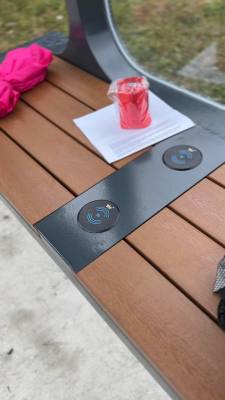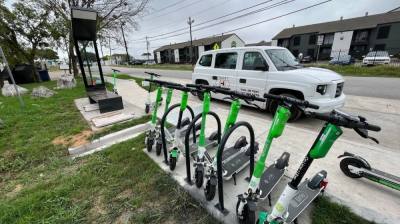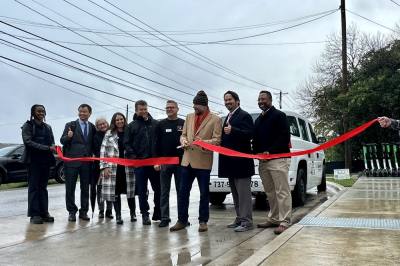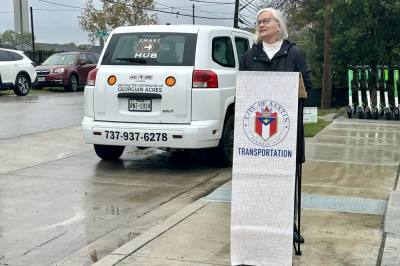“People were having to walk in a high crime area for upwards of a mile. We came up with the option of creating short-term mobility options,” said Chris Haskins, founder of Jail To Jobs, a local nonprofit that empowers youth offenders under the age of 25 by providing job training.
The mobility hub located at 312 East Wonsley Drive, Austin, allows people to either take a free Lime scooter parked at the location or schedule it in one of two circulator buses operated by Jail to Jobs. They can also charge their cell phones with solar-powered charging pads provided on the benches while they wait for the ride.
“The National Science Foundation funded our first year, and so not only is it funding the operations of all the things, but also the research behind [it], which is the most important piece,” Haskins said.
A research team led by UT professor Junfeng Jiao found that the neighborhood was a "transit desert," or an area with high demand for public transit but low supply.
“We don't have enough supply for buses and other public transportation within this area. So that's a mismatch between demand and supply,” Jiao said.
The city of Austin transportation department reached out to the Georgian Acres neighborhood to understand what the residents needed.
“When we started meeting with the community and started talking with a lot of the elders in this community about who are the people that we can trust, they talked about Jail To Jobs,” said Jason JonMichael, Assistant Director of Transportation for the city of Austin.
Jail To Jobs showed them the location of the transit hub, which was a vacant lot prone to late night crime, JonMichael said.
“We understood that folks really only had one or two choices: either walk and take transit, or try to find a way to get a car, and most of the communities here and most of the households and residences here can't afford it,” he said.
The location of the hub provides micro-connections with nearby developments as well, and a 10-foot easement is now a walkway to a nearby public park, said District 4 Council Member José “Chito” Vela, who was at the opening of the mobility hub.
The city of Austin transportation department worked with the UT School of Architecture to plan the design for the hub.
“We're there to bring knowledge, expertise, the best array of information, the tools and the scenario development,” said Michelle Addington, dean of the UT School of Architecture.
Passengers can get dropped off to the nearest bus stop a mile away on North Lamar and North US 183.











